Submitted by WA Contents
“I used positive aspects of migration in Superkilen” said Martin Rein-Cano at reSITE 2016
Czech Republic Architecture News - Jun 16, 2016 - 23:13 23046 views
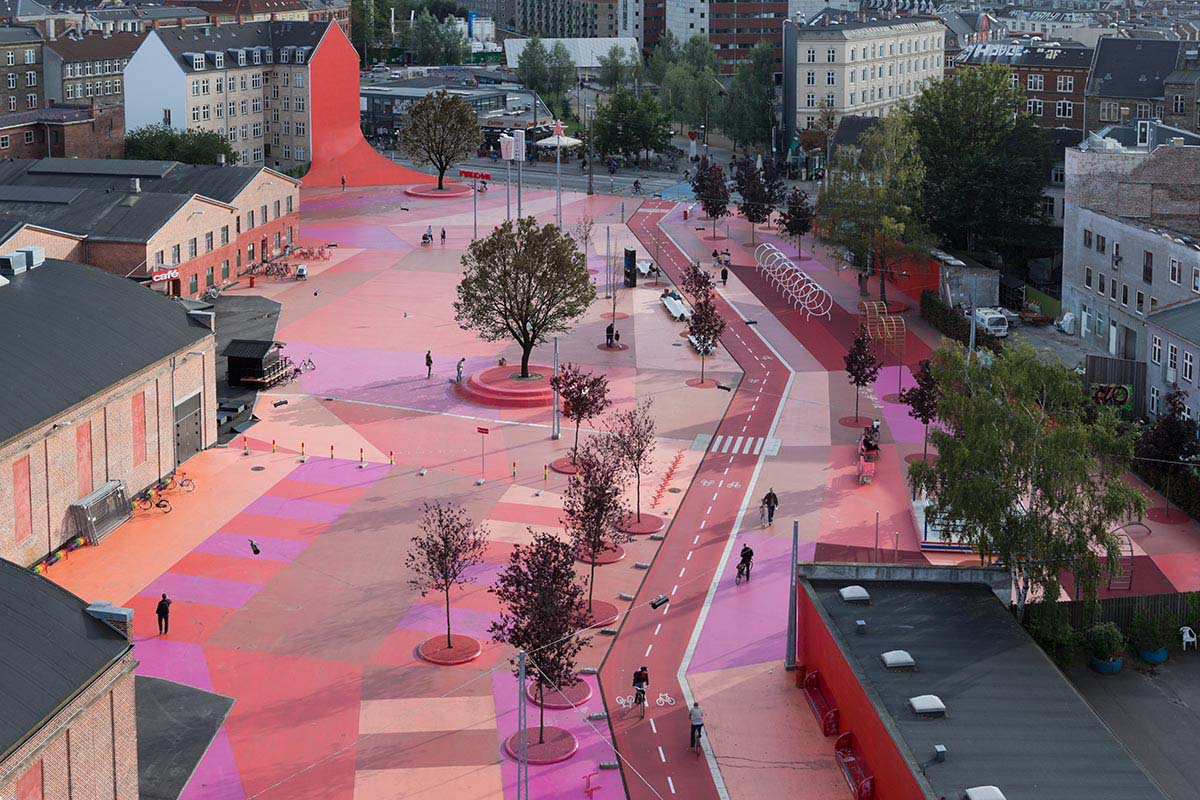
Landscape architect Martin Rein-Cano has delivered a keynote address about Superkilen Park at reSITE 2016. Superkilen in Copenhagen designed by Bjarke Ingels Group (BIG), TOPOTEK 1 and Superflex in 2012.
reSITE's last session has focused on 'Migrating Cultures: Inclusive Design' examining public space, urban planning and architectural design with realised projects. Superkilen is more than a park or public space, it's special identity is materialised with particular design idea by multicultural objects, furnitures, avoiding copy-paste public space design objects and it was completely realised by collaborative work with Copenhagen citizens.
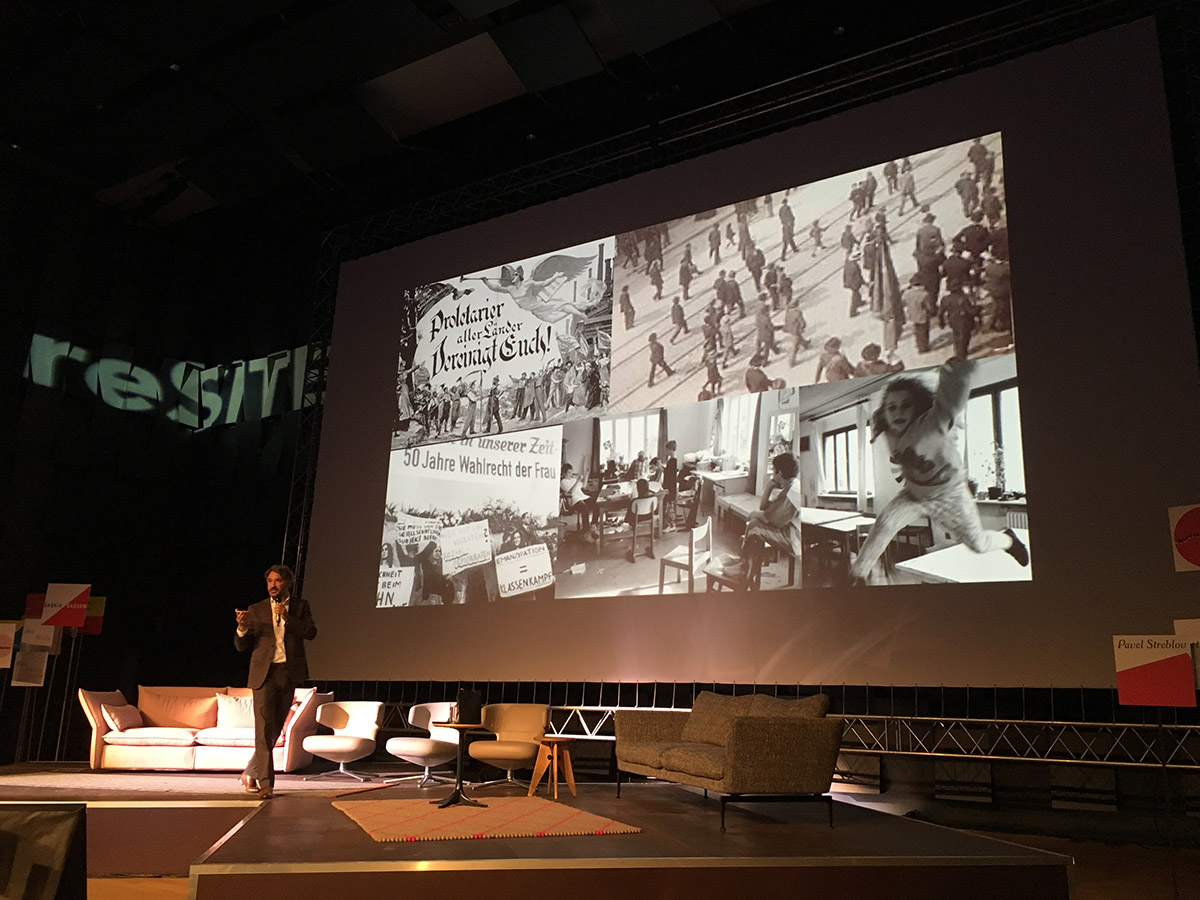
Martin Rein-Cano is giving lecture about Superrkilen at reSITE 2016. Image © WAC

Martin Rein-Cano, director of TOPOTEK 1. Image courtesy of TOPOTEK 1.
''Everyone talks negative aspects of migration, but I used positive aspects of migration in Superkilen'' said Martin Rein-Cano at reSITE. ''While the romantic gardens of the 19th Century attempted to give the visitors an exotic experience of the world that was still big and hard to travel around, the Superpark portrays a true sample of the cultural diversity of contemporary Copenhagen'' Rein-Cano added.
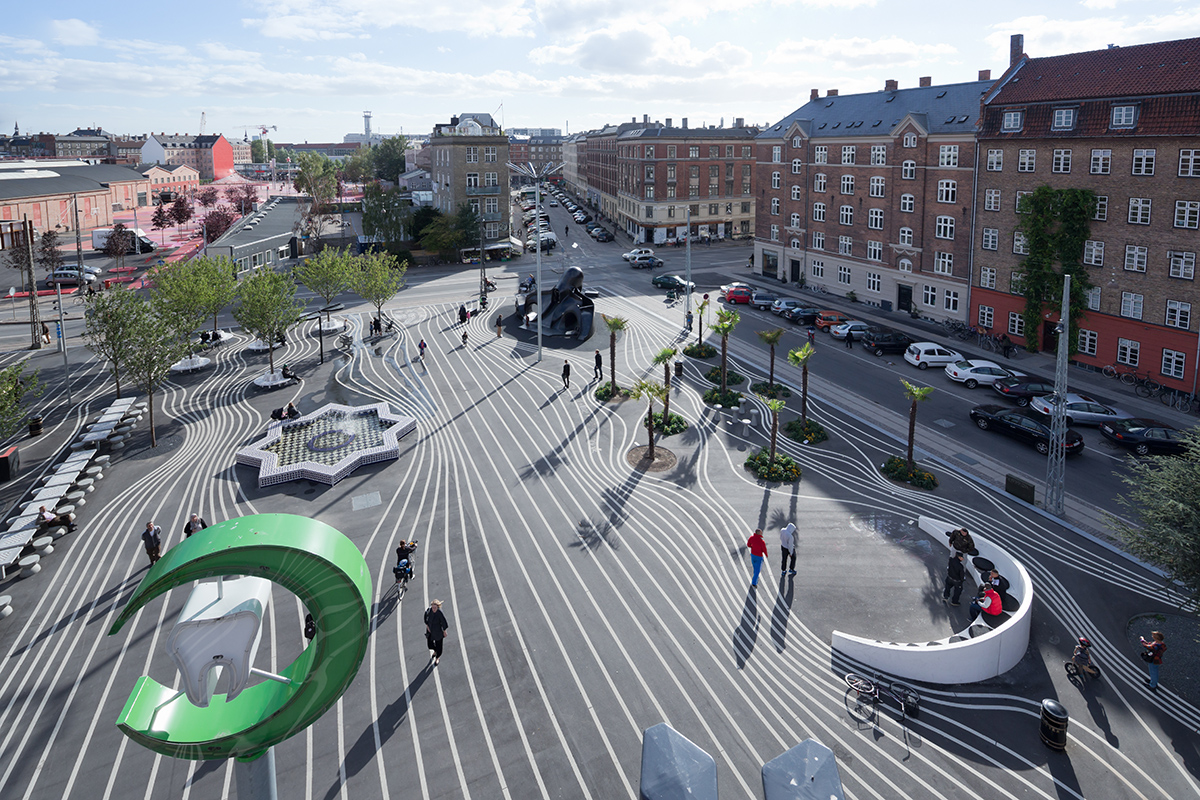
Image © Iwan Baan
New norms, paradigms, inputs and design principles of public spaces, urban streets, cities in general are radically changing and transforming themselves in a different way by the architects and citizens – the design of public spaces or urban streets are now reshaped through the community and collaborative approach, which should already be integrated into each design process.
''People actively use this space and it is a good example of how multiculturality is shaped through design'' adds Rein-Cano in his lecture for reSITE 2016.

Image © Iwan Baan
Superkilen Park is a very distinctive project that highly succedded all of these aspects in its own scale and it promotes very liveable, multicultural, diverse, usable and dynamic public space in Copenhagen and embraced by Copenhagen citizens. It is not a classical park that we’re familiar with but Superkilen is an multicultural embodiment of a public space generated by foreign objects and collectives brought from 100 different countries, and that gives a unique identity to Superkilen that is owned by the citizens.

Foreign object brought from 100 countries. Image courtesy of TOPOTEK 1.
Superkilen is an urban park located in the ethnically and socially mixed neighborhood of Nørrebro in Copenhagen. While it is one of the most dynamic and multicultural districts in the Danish capital, it has also been the site of several riots and is reputed for street violence. The competition asked for a park to address the social issues of the neighborhood. The final design for Superkilen cultivates the conflicts related to migration by recontextualizing them, while celebrating diversity in the immigrant neighbourhood and creating a new public space with its own identity.
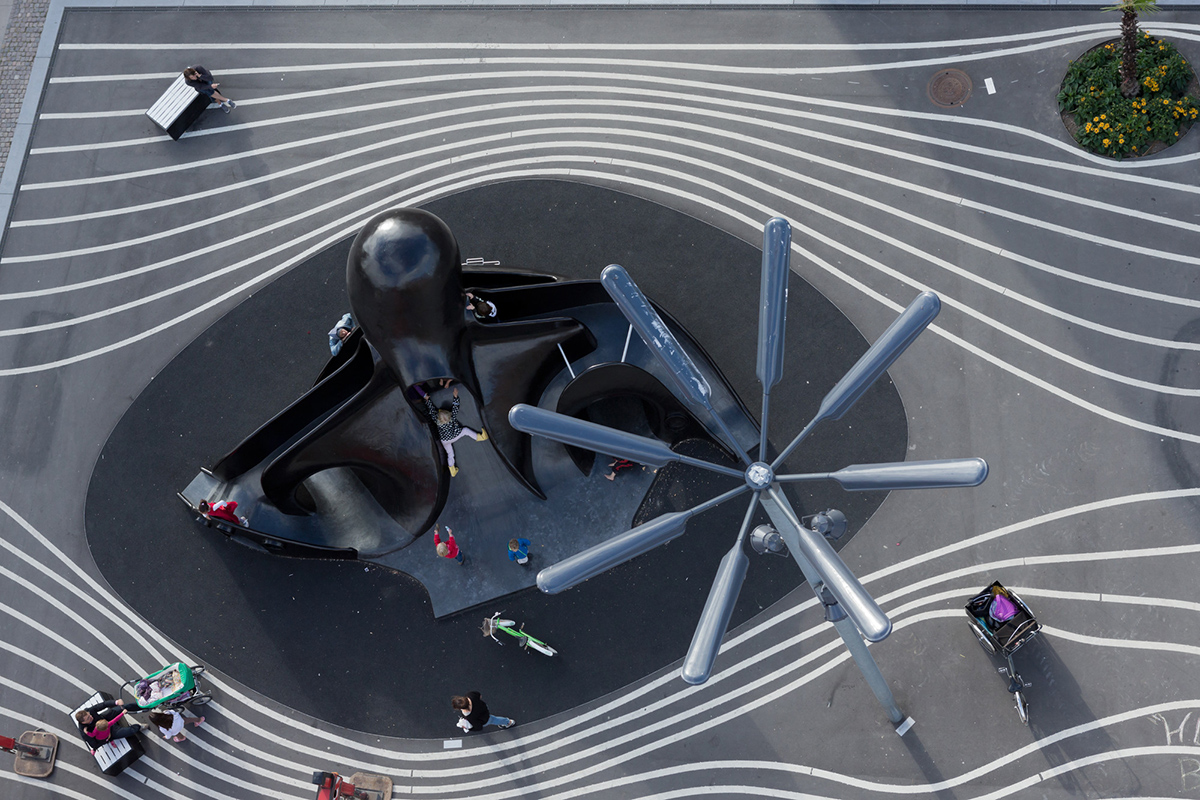
Image © Iwan Baan
The idea of collecting and displaying foreign follies is central to traditional English landscape garden design. An English garden became a symbol of what its owner wanted to project, their identity represented by the objects they chose to display. Superkilen aims to be a symbol of the multicultural Nørrebro neighbourhood.
Exposing cultural divide and associated conflicts drives much of the design process. A collection of foreign objects allows the reality of diversity to be spectacled, and the objects come to represent the identities of the people, integrating their foreign backgrounds into Danish public space. The objects that populate Superkilen were selected by the residents. Superkilen gives the modern notion of human migration a physical form, while redefining the potential for public participation in design.

Image © Iwan Baan
Superkilen required the use of participation heavily throughout the design and conception processes rather than merely in the planning phases. Art initiatives allowed for several trips abroad to be made with residents to collect objects. This approach to participation stems from a desire to cultivate a sense of identity in the neighborhood, forged through pluralism. Some objects, like the Palestinian soil, were translocated from their original place.
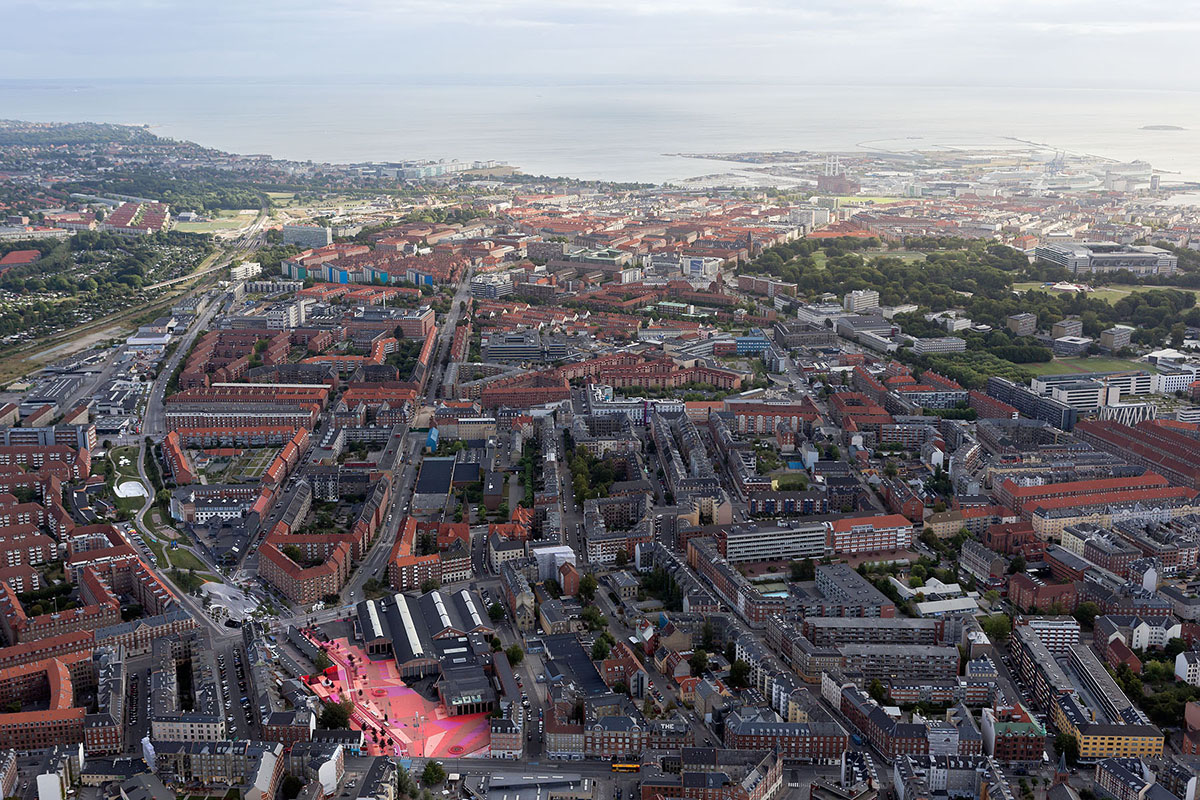
Image © Iwan Baan
Others, such as the neon dentist's sign from Qatar, were translated and reconstructed on site. Alien activities that can cause community tension find a place in Superkilen as a result of translocation; placing volume controlled Jamaican jukeboxes on the street gives street parties a place and a time, codifying and legitimizing the loud, unruly activity. The translocation and translation of objects out of their original contexts into Superkilen often required Danish reconstruction and redesign, resulting in an object that is at once foreign and Danish, like the immigrants themselves.
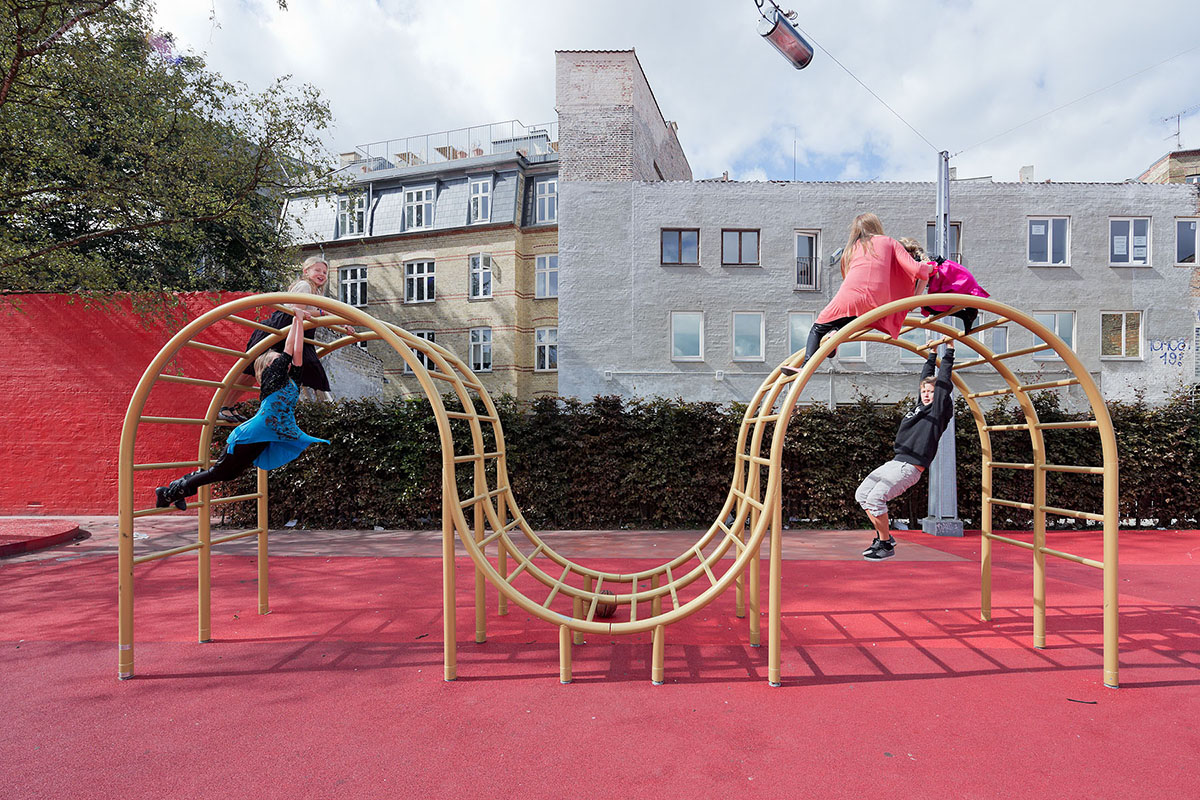
Image © Iwan Baan
The linear park is formally organized into three zones defined by colour: the Red Square, the Black Market and the Green Park. Conceptually, their referential names subtly tease at the illegal activities that occur there; formally, these colours form a unifying base for the collection of objects and trees from around the world.
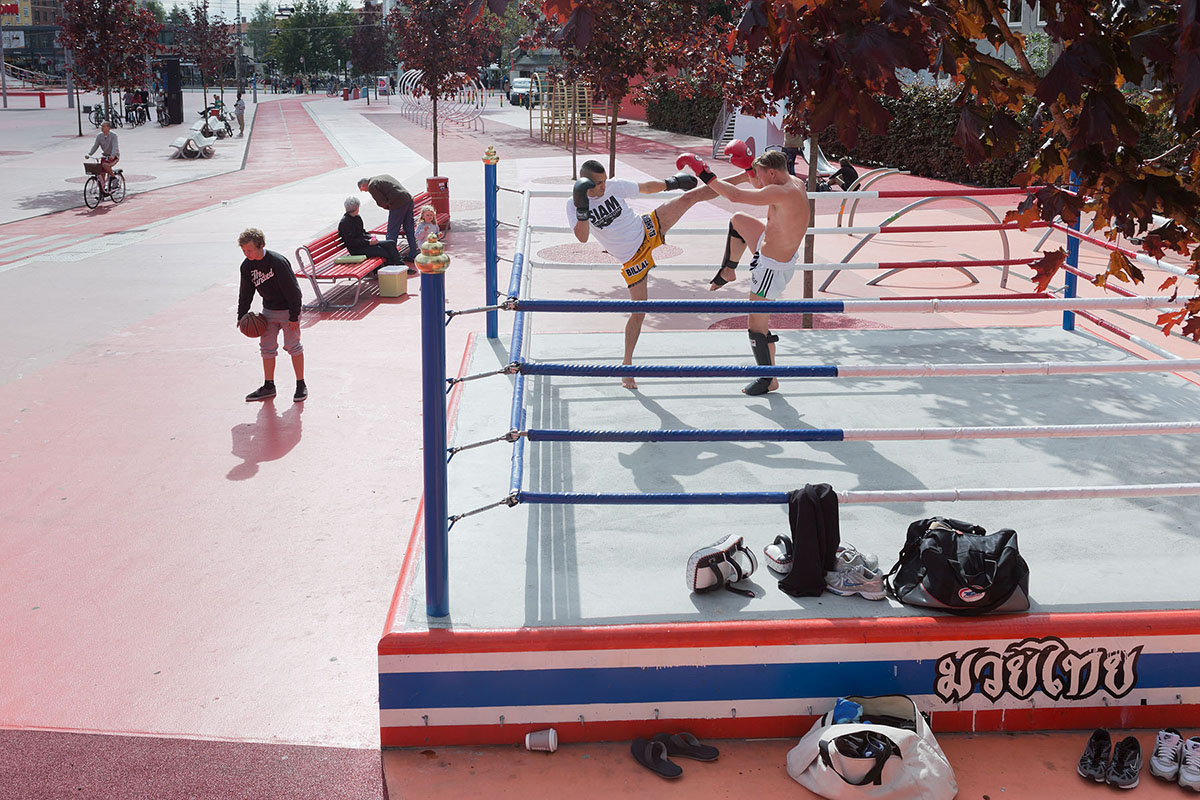
Image © Iwan Baan
The non-native trees used throughout are a further reflection of the concept of migration identity, especially the palm trees, which, like the people, are visibly foreign, trans-located and put into a non-native environment with a collection of other non-native trees. However, like the changing climate that allows palm trees to survive in Denmark, the current state of international human migration necessitates the design of new public open spaces to embrace hybridism in neighbourhoods.
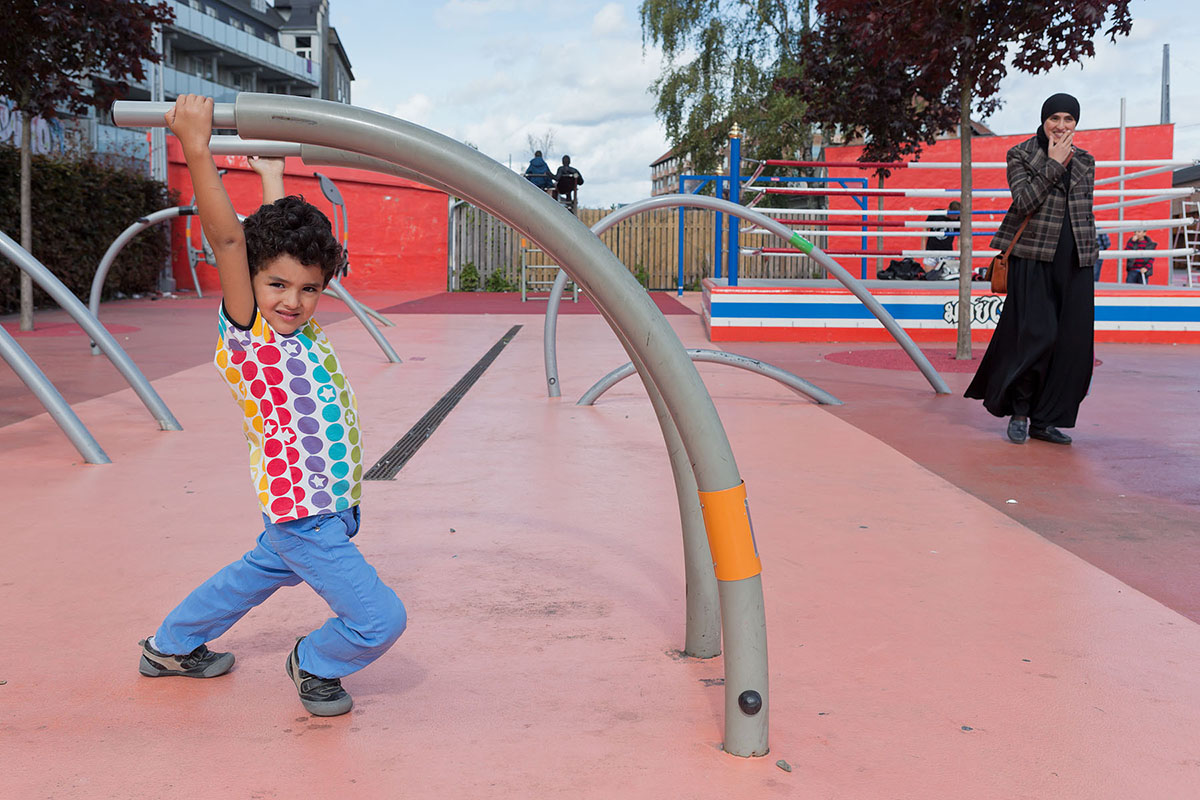
Image © Iwan Baan
Superkilen's invested design activates the neighborhood into a destination. Residents can identify with its inclusive diversity, and visitors are drawn to its unique foreign character. The new park gives new life to the area, embracing multiplicity, providing a framework for aggression and standing as a symbol for the people who are at once Danish and foreign.

Image © Iwan Baan
In Superkilen, street brawls are relegated to a street side Thai Boxing Ring; manhole covers come from Tanzania, Israel, Ireland, Poland and France; and a bus stop sign from Jordan stands next to a bus stop shelter from Kazakhstan. The mix of objects, trees and colours unifies the mixed neighborhood by giving it a public space that celebrates its hybridized identity.
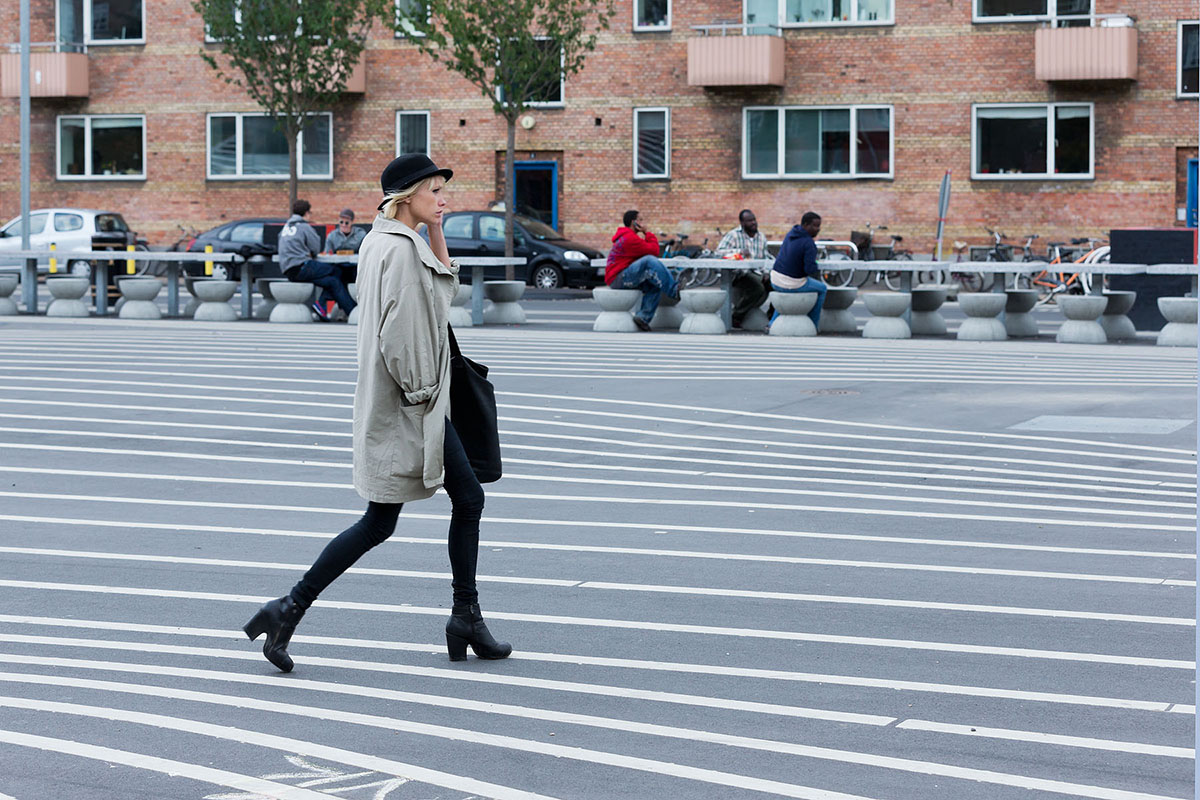
Image © Iwan Baan
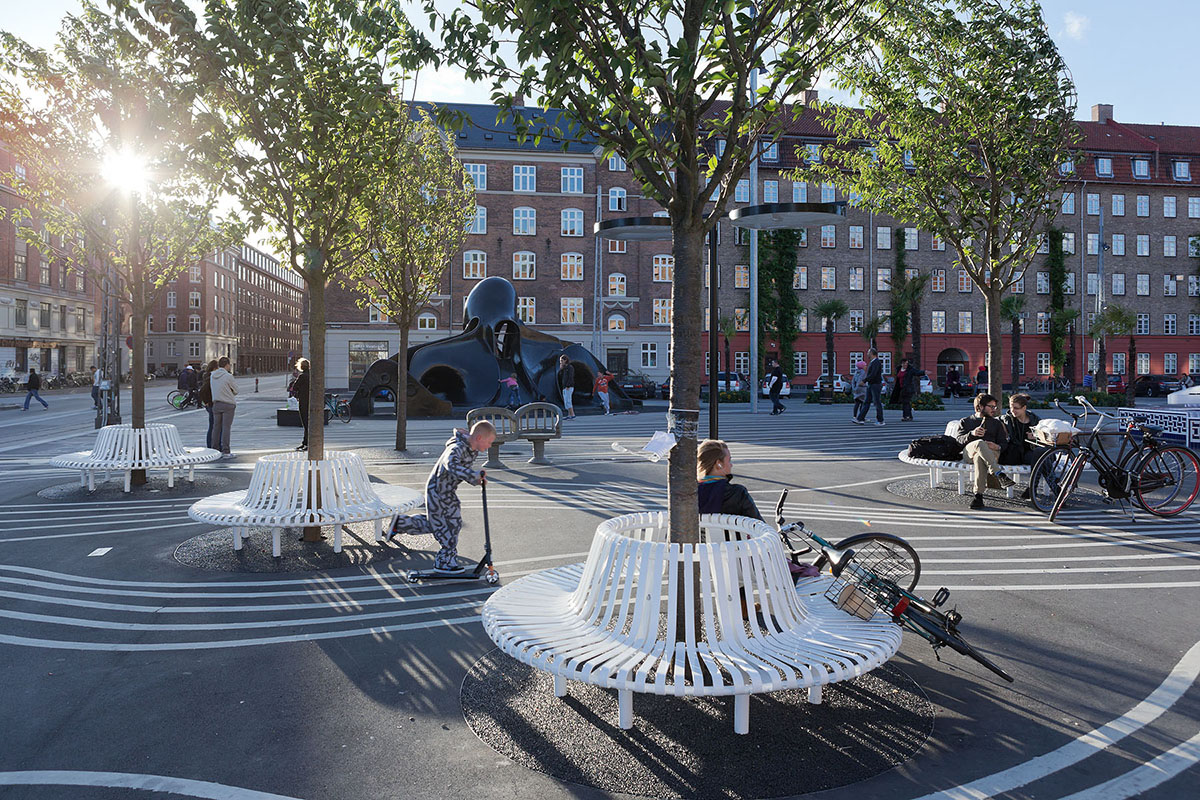
Image © Iwan Baan

Image © Janes Lindhe
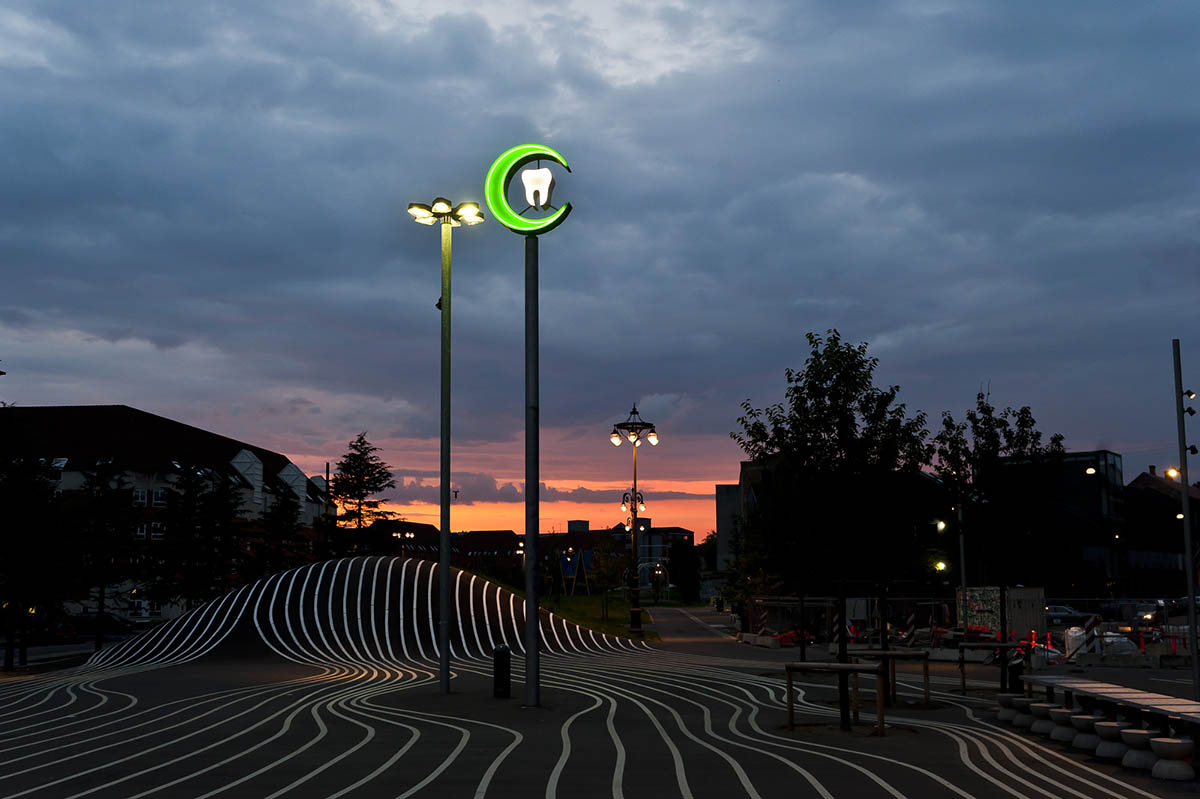
Image © Mike Magnussen
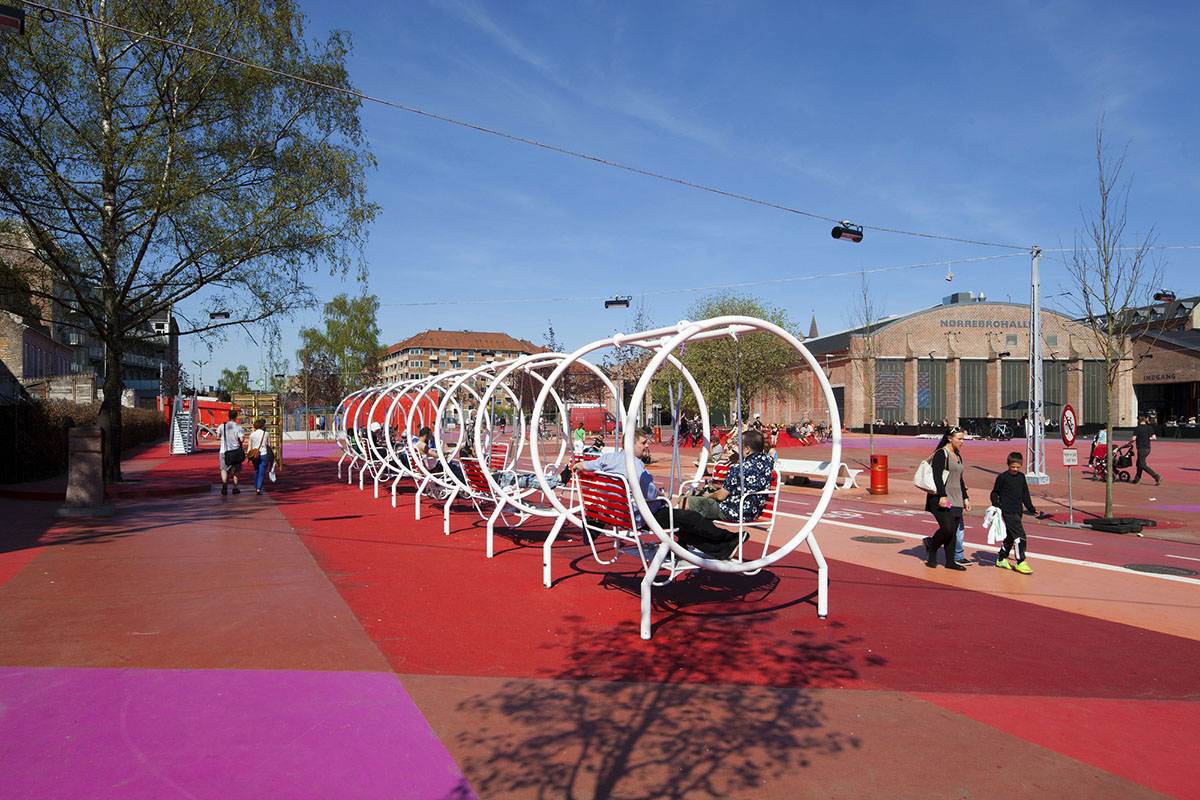
Image © Torben Eskerod
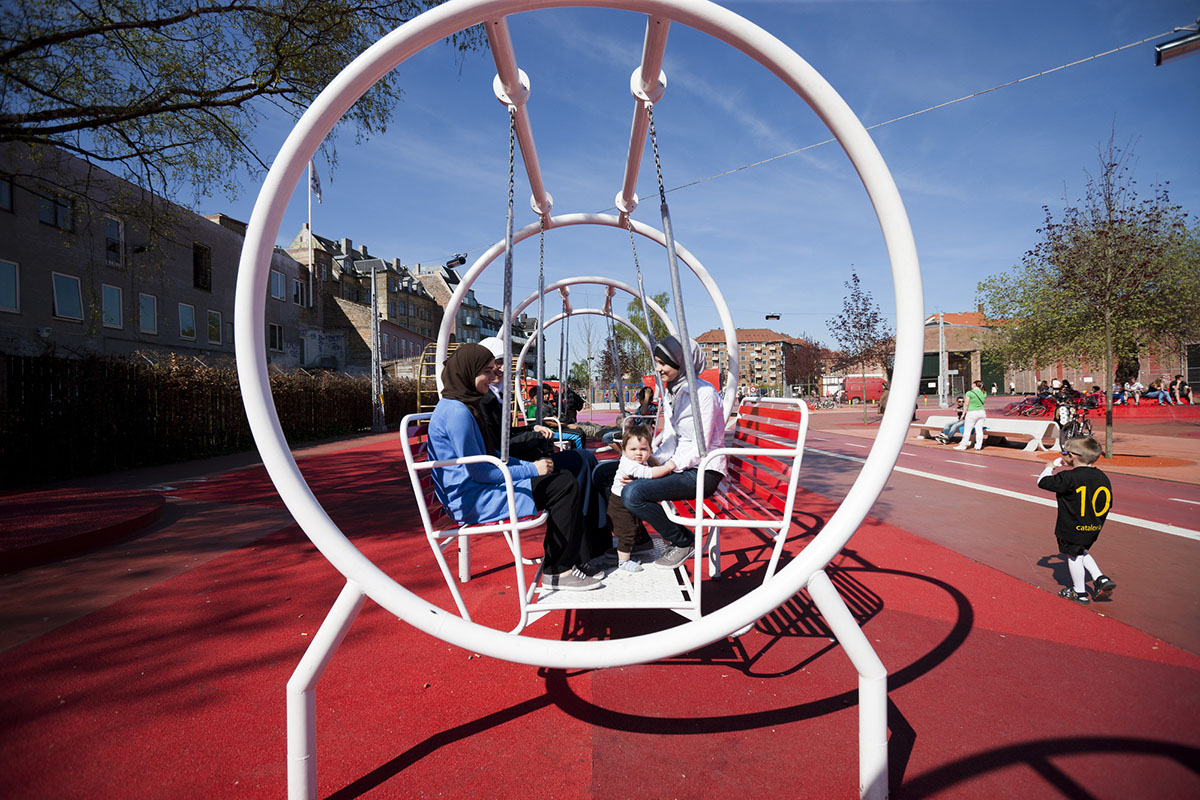
Image © Torben Eskerod
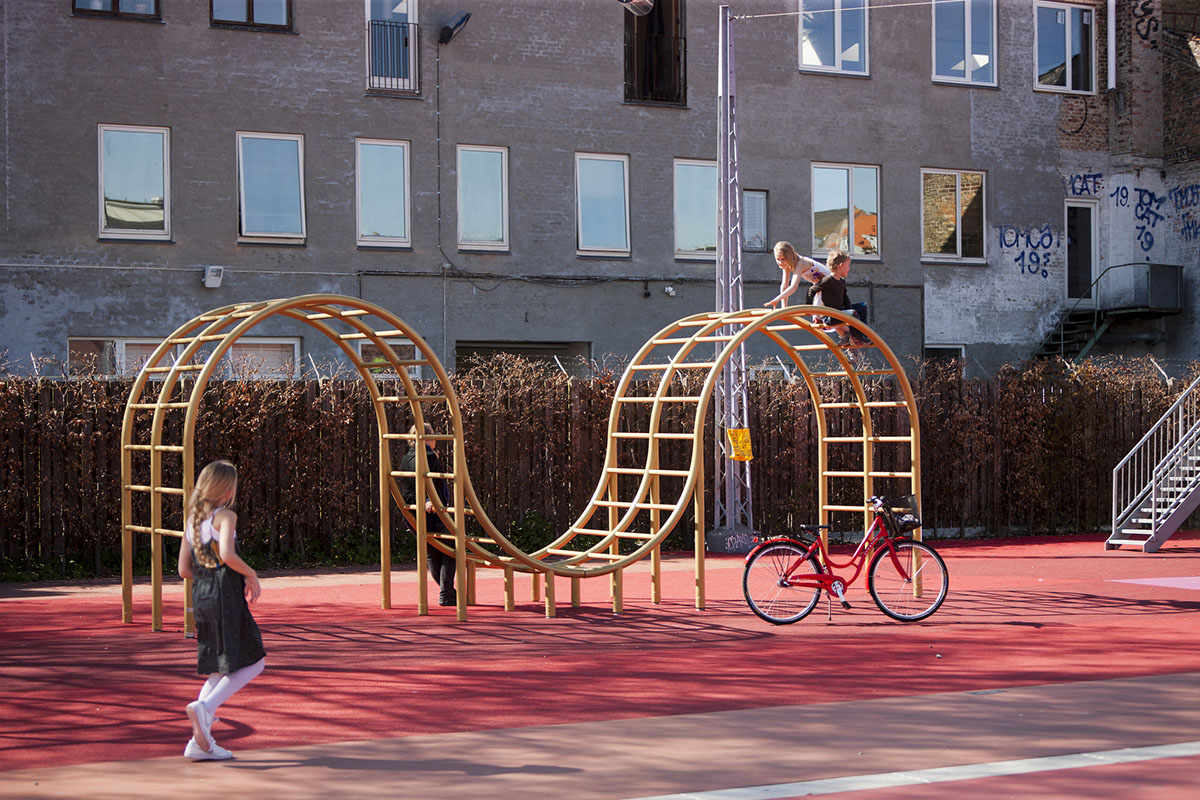
Image © Torben Eskerod

Image © Torben Eskerod

Image © Torben Eskerod
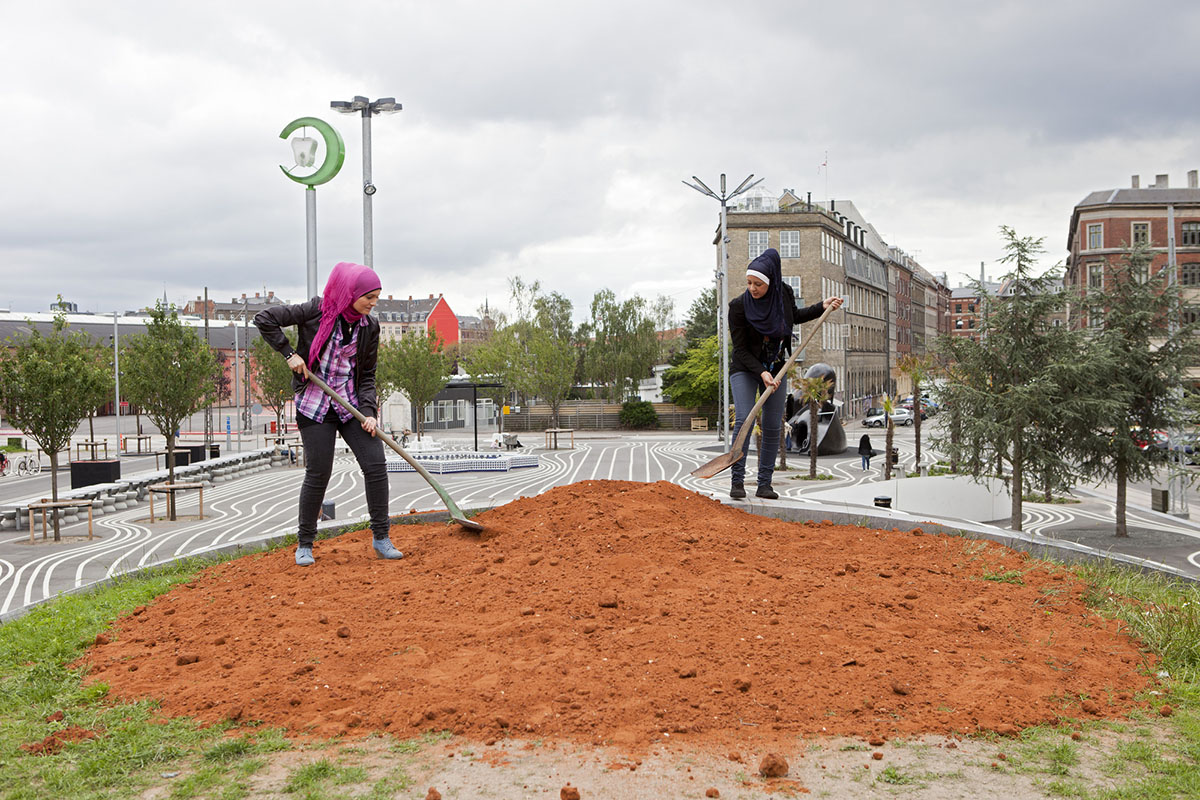
Image © Torben Eskerod
Top image © Iwan Baan
For detailed information about lectures, interviews, events, stay tuned!
Follow us via #reSITE2016 hashtag on Twitter and Instagram
